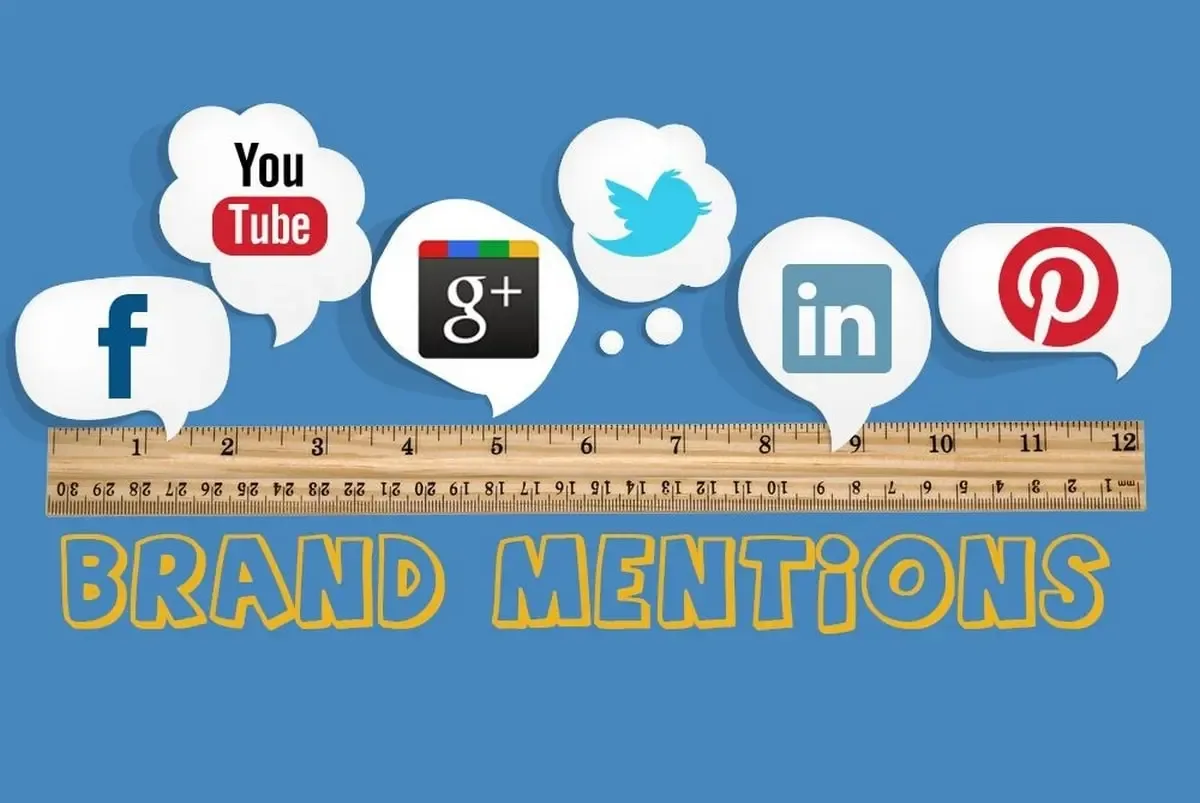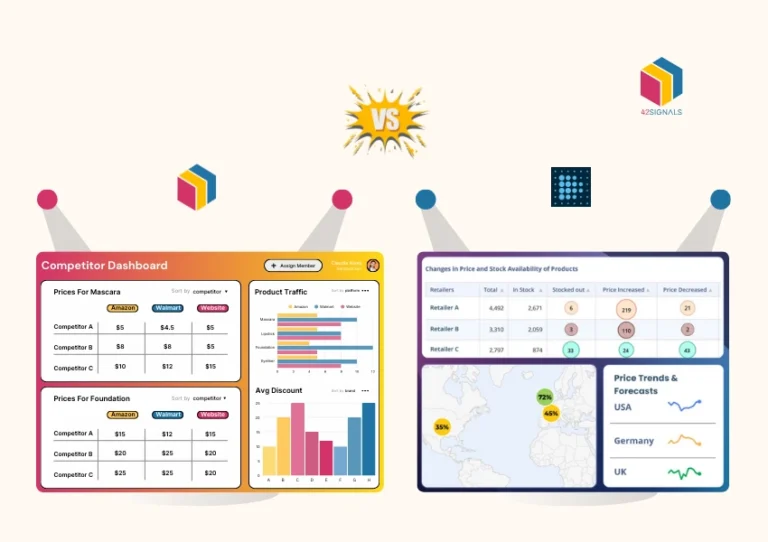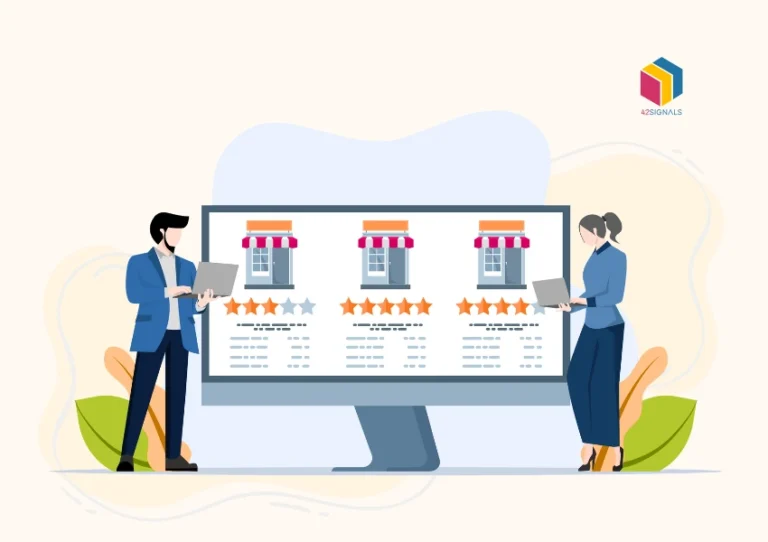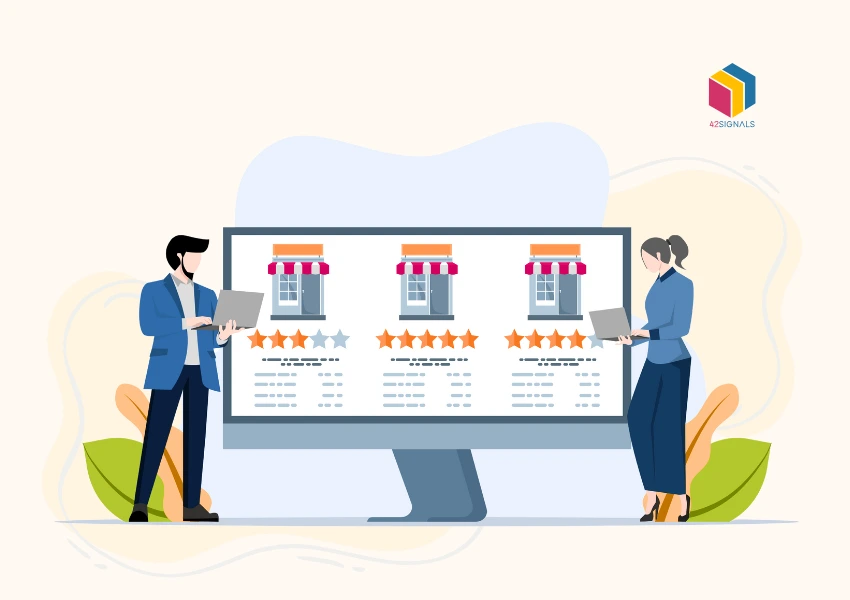Table of Contents
ToggleManaging your online presence is no longer just about controlling what you post; it also involves monitoring conversations around your brand and ensuring they align with your values and goals. This is where leveraging brand mentions comes into play.
In today’s digital age, the narrative around your business is often shaped not just by what you say, but by what others are saying about you.
Social media, forums, blogs, and online reviews have given consumers a loud and influential voice, and their opinions can have a powerful impact on your brand’s reputation and success.
By actively tracking and engaging with these mentions, businesses can improve their reputation and boost e-commerce performance.
Every mention of your brand offers an opportunity to strengthen relationships with customers, address concerns, and capitalize on positive feedback.
When done correctly, monitoring brand mentions can provide valuable insights, drive customer loyalty, and give you a competitive edge.
What goes into it? Let’s find out.
Brand Mentions to Improve E-Commerce Performance
Every unprompted mention of your brand—whether on social media, review sites, or forums—is a direct line to your customers’ perceptions and purchasing intent. By deploying AI-powered monitoring tools (like Brandwatch or Sprout Social), you gain real-time visibility into these conversations, turning passive observations into revenue-generating opportunities.
Responding swiftly to positive mentions amplifies social proof—embedding user-generated content (UGC) on product pages can lift conversions by 5–10%—while engaging negative feedback within 60 minutes (using a 4-step “Acknowledge-Apologize-Action-Advance” framework) retains 95% of dissatisfied customers. Beyond reputation management, this vigilance uncovers untapped trends: spikes in competitor complaints reveal market gaps to exploit, and frequent product nicknames (“Stanley cup”) signal high-intent keywords for SEO and ad targeting. Ultimately, treating brand mentions as a live feedback loop fuels personalized marketing, reduces customer acquisition costs (CAC), and builds trust that translates directly to cart abandonments and lifetime value (LTV).
The strategic power of brand mentions lies in their ability to map and influence the entire customer journey. Analyzing sentiment patterns across platforms (e.g., TikTok unboxing videos vs. Reddit deep-dives) allows you to tailor touchpoints: rave reviews become shoppable UGC galleries, while recurring pain points inform product iterations or service upgrades. For example, tracking competitor mentions for “slow shipping” lets you position your 2-day delivery as a key differentiator in paid ads. Simultaneously, identifying brand advocates—micro-influencers organically praising your products—creates low-cost partnership pipelines, driving authentic reach without inflated influencer fees.
Crucially, linking brand mention engagement to revenue metrics (via UTM-tagged responses and CRM tracking) proves ROI: brands that systematize mention management see 15–30% faster crisis recovery, 20% higher repeat purchase rates from recovered critics, and a 12% average revenue uplift from UGC-driven campaigns. In an era where 84% of consumers trust peer reviews over ads, harnessing brand mentions isn’t just reputation care—it’s engineering purchase decisions at scale.
Set Up Monitoring Tools
One of the first steps in effectively managing your brand mentions is setting up monitoring tools. In today’s fast-paced digital environment, it’s impossible to manually track every conversation happening about your brand.
Thankfully, tools like Hootsuite, Mention, or Brandwatch are specifically designed to simplify this process. These social listening tools help track conversations related to your brand, products, services, competitors, and even industry-specific keywords across various platforms.
- Granular Keyword Architecture:
- Track not just your brand name, but:
- Product nicknames (e.g., “Stanley cup” for Quencher tumbler)
- Common misspellings
- Competitor + “vs [Your Brand]” phrases
- Industry pain points (“slow shipping,” “returns hassle”)
Example: Glossier tracks “skin tint dupes” to intercept budget-conscious shoppers.
- Track not just your brand name, but:
- Platform-Specific Tactics:
- Reddit/Forums: Use Brandwatch or Awario to mine niche communities (e.g., r/SkincareAddiction for beauty brands)
- TikTok/Instagram: Leverage native creator tools to detect untagged video mentions
- Review Sites: Integrate Trustpilot/Yotpo alerts into your CRM

Image Source: Sprout Social
For example, you can use tools like Sprout Social to keep tabs on what people are saying about your business, even if they don’t tag you directly. These tools aggregate mentions from social media, blogs, news sites, and forums, providing a holistic view of your online presence.
Additionally, setting up Google Alerts for your company name, product names, executive team members, and other relevant terms can offer real-time notifications.
This ensures that you’re quickly informed of both positive and negative feedback, giving you the opportunity to respond promptly. Staying on top of these mentions helps foster customer loyalty and trust by demonstrating that you’re actively engaged and responsive.
Engage with Positive Mentions

Image Source: Business2Community
Using brand mentions, when customers share positive experiences with your brand, it’s essential to capitalize on those moments. Positive mentions are golden opportunities to engage with your audience, show appreciation, and build stronger relationships.
- Acknowledge:
- Respond within 60 mins (brands that do see 28% higher CSAT)
- Personalize: “Love how you styled our dress, Sarah!” > “Thanks!”
- Amplify:
- Repurpose UGC: Embed Instagram posts on product pages (increases conversions 5.2x per Nosto)
- Create “Customer Spotlight” newsletters featuring top mentions
- Incentivize:
- Surprise advocates with loyalty points or early access
Example: Sephora’s #SephoraSquad offers free products to engaged followers
- Surprise advocates with loyalty points or early access
By responding to comments, retweeting posts, or even creating user-generated content campaigns around positive feedback, you not only reinforce a connection with happy customers but also demonstrate authenticity and transparency to potential buyers.
For example, if a customer tweets about loving your product, a quick “thank you” can go a long way. Better yet, if you turn that tweet into a post on your Instagram or Facebook page, you provide social proof that real people love your brand. This visibility can boost your credibility and influence others to make a purchase.
Moreover, engaging with positive mentions can create a ripple effect. When people see a brand genuinely interacting with its customers, it enhances trust and builds a community.
This community-driven approach makes new customers more likely to convert because they see that your brand values relationships and customer satisfaction.
Address Negative Feedback Professionally
On the flip side, no business enjoys receiving negative reviews in brand mentions, but how you handle them is critical. Negative feedback, when addressed with professionalism and empathy, can actually turn into a positive experience for both the customer and your brand. It demonstrates that you care about customer experiences and are committed to improvement.
- Triage with AI:
- Use Clarabridge or Medallia to auto-classify issues (shipping vs. product defect)
- Off-Ramp Privately:
- Move heated debates to DM/email after initial public response
- Turnaround Tracking:
- Tag recovered customers in your CRM for future win-back campaigns
Data Insight: 95% of complaining customers become loyal if resolved quickly (Harvard Business Review).

Image Source: Datalligence
When handling negative feedback, the key is to remain calm and avoid being defensive. Acknowledge the customer’s concerns, apologize if necessary, and provide a solution or invite them to discuss the matter privately. By addressing issues head-on, you show that your brand values transparency and takes responsibility for mistakes.
Interestingly, how you handle criticism can also win over potential customers. Studies show that when brands respond to negative feedback thoughtfully, customers are more likely to view them positively.
This is because people understand that mistakes happen, but what matters is how those mistakes are rectified. In fact, resolving complaints publicly often results in greater customer satisfaction than ignoring them, and sometimes even leads to those previously unhappy customers becoming brand advocates.
Identify Opportunities for Collaboration
Monitoring brand mentions doesn’t just help in managing reputation; it can also uncover valuable opportunities for collaboration. As you track conversations about your brand, you might identify influencers or customers who are vocal about your products. These individuals could be great partners for future collaborations.
For instance, a blogger who regularly mentions your products could be a good candidate for an influencer partnership. Engaging with these individuals and building relationships can lead to mutually beneficial collaborations that not only expand your reach but also enhance your credibility in the eyes of your target audience.

Image Source: Brand 24
Additionally, with brand mentions you may find disgruntled clients who, after a positive interaction with your customer service team, turn into brand advocates.
Thoughtful outreach and conflict resolution can go a long way in turning negative experiences into opportunities for future growth. These kinds of relationships can boost your reputation and expand your customer base.
Analyze Competitor Mentions
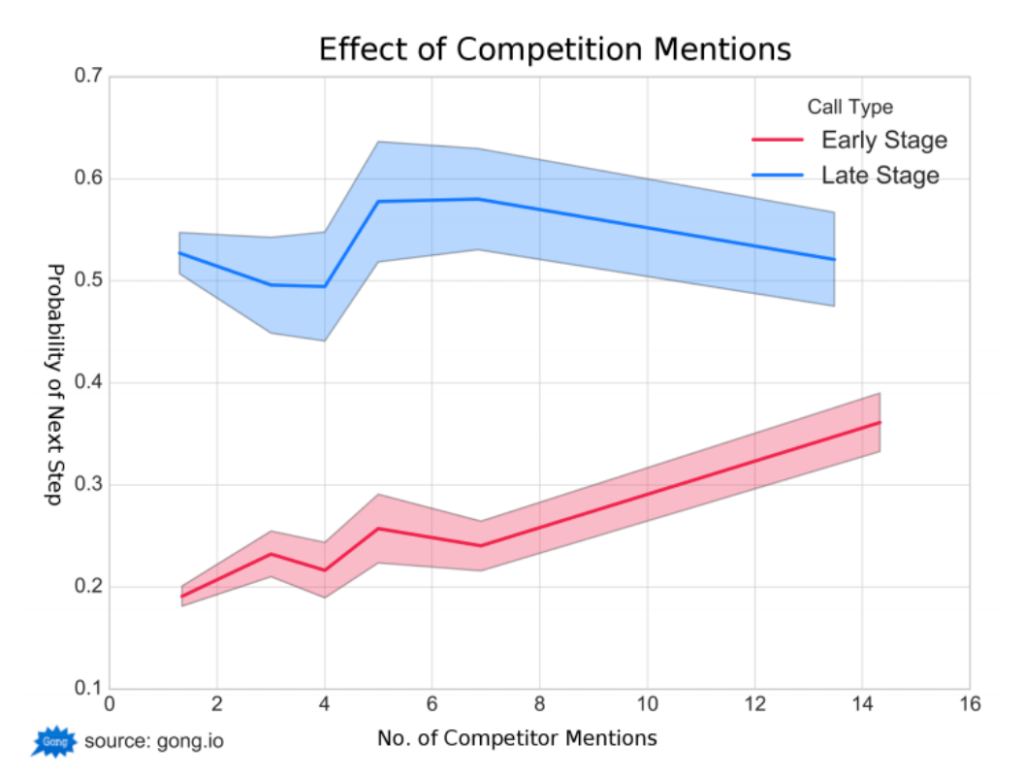
Image Source: Gong
Another way to leverage brand mentions is by analyzing mentions of your competitors. Keeping an eye on what people are saying about your competition can provide insights into what they’re doing right and where they’re falling short.
Use this information to differentiate yourself and address gaps in their strategy. For instance, if customers are consistently complaining about a feature that your competitor’s product lacks but yours excels in, you can highlight that feature in your marketing campaigns to attract those dissatisfied customers.
Monitoring competitor mentions also helps you stay ahead of industry trends and customer preferences. By understanding the pain points of a shared audience, you can tailor your offerings to better meet their needs and preferences, thus gaining a competitive advantage.
Measure Results and Adjust Strategies Accordingly
Once you’ve established a system for monitoring and engaging with brand mentions, the next step is to measure the impact of your efforts. Tools like Google Analytics, Sprout Social, or Brandwatch offer data-driven insights that allow you to track changes in website traffic, conversion rates, social media followers, and overall sentiment surrounding your brand.
Regular analysis of these metrics is crucial to understanding what’s working and what needs improvement. For example, if you notice a spike in sales after engaging with a particular influencer, you might want to consider extending that partnership or finding other similar influencers. On the other hand, if negative mentions are increasing, it might be time to reassess your customer service approach or marketing strategies.
By consistently measuring the results of your brand mention strategy, you can make informed adjustments that optimize your online presence and contribute to long-term growth.
Frequently Asked Questions on Brand Mentions
What is a brand mention?
A brand mention occurs when your brand name, product, or service is referenced online—whether in an article, blog post, social media post, forum, or review. Mentions can be direct (including a clickable link to your site) or indirect (mentioning the name without a link).
Brand mentions are important because they reflect how often and where your brand appears in public conversations, influencing awareness, credibility, and SEO.
How to calculate brand mentions?
You can calculate brand mentions by tracking how many times your brand name appears online during a set period. This can be done by:
- Using social listening tools like Brand24, Mention, or Sprout Social.
- Setting up Google Alerts for your brand name.
- Using SEO tools like Ahrefs or Semrush to track unlinked mentions.
The formula is simple:
Brand Mentions = Total number of brand references found across platforms in a given time frame
You can also break it down by source (social, news, blogs) for deeper insights.
How to use brand mentions?
You can leverage brand mentions to:
- Build backlinks – Reach out to sites mentioning your brand without linking to request a backlink.
- Monitor brand reputation – Spot positive and negative feedback in real time.
- Engage with your audience – Reply to social mentions to improve customer relationships.
- Measure campaign success – See if a marketing push increased mentions.
- Identify influencers – Find people already talking about your brand for potential collaborations.
What are brand mentions in off-page SEO?
In off-page SEO, brand mentions—especially unlinked ones—help search engines understand that your brand is being discussed and recognized across the web. While linked mentions directly pass authority through backlinks, unlinked mentions still contribute to brand authority and trust signals in Google’s algorithm.
Off-page brand mentions can come from:
- News coverage
- Guest blog posts
- Social media discussions
- Reviews and testimonials
Consistently earning quality brand mentions can strengthen your site’s authority and improve rankings.
